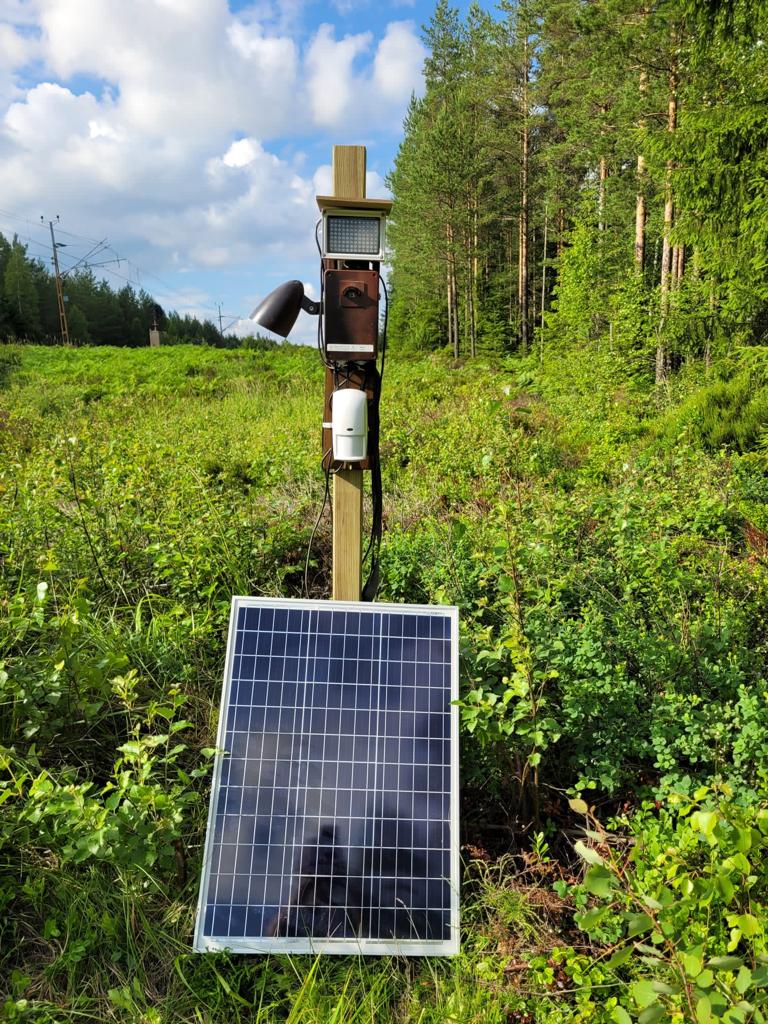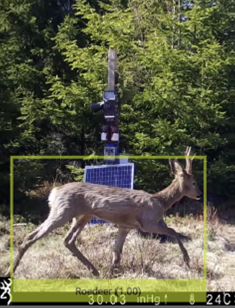A handful of the external research projects at Grimsö focus on large scale evaluations of practical techniques to manage wildlife-traffic problems. These projects are led by Grimsö but conducted in collaboration with several national and international stakeholders, including, e.g. the Swedish Transport Administration (Trafikverket), Interreg Sweden-Norway and the Norwegian BaneNOR. Many issues concerning wildlife and traffic are complex but with growing importance in the last decades, both due to denser populations of large mammals and continued increase in traffic volumes. More information about the projects and innovative solutions to reduce wildlife collisions in traffic can be found at Om projektet – Vilt och Trafik.

One of the current projects, “Viltvarning vid järnväg” (translating to “Wildlife warning near railroads”), focuses on identifying techniques to scare animals away from railroad areas using sounds. This is being explored as an alternative to exclusion fences and wildlife passages, as it has the potential to be a more flexible and less expensive solution. One design being tested is called a MASS unit (Movement Activated Scaring System) and uses infrared (IR) sensors to detect movements, which in turn activate speakers that send out various sounds (horns, voices etc.) at a high volume (>70 dB) to scare away animals.

This type of camera monitoring results in massive amounts of pictures, by far exceeding what can be handled and analyzed manually. Several automatic solutions, e.g. software & artificial intelligence (AI), for this are nowadays under test, where one tricky part is to obtain reliable and accurate identifications of species in the pictures. Depending on the position of the animal this may be more or less problematic, and in some situations impossible to achieve proper identifications. A separate part of the mentioned projects is to test software based on a machine learning processes using several different pictures of known animals, that vary in position, distance from the camera, etc. The raw data from the picture analysis shows a probability measure for which species are shown. At present, a cut off-level is often applied for an acceptable level of identification (e.g. 90%, but varies due to study aims). After removal of potential pictures showing humans, the raw data gets stored on a common platform between the Swedish Transport Administration and the project, where then AI is used to classify animals to species.
The collaborative work in this project among authorities, consultants and researchers, combined with the scientific evaluation of the methods tested, is a good example of how SITES stations can be utilized broadly.